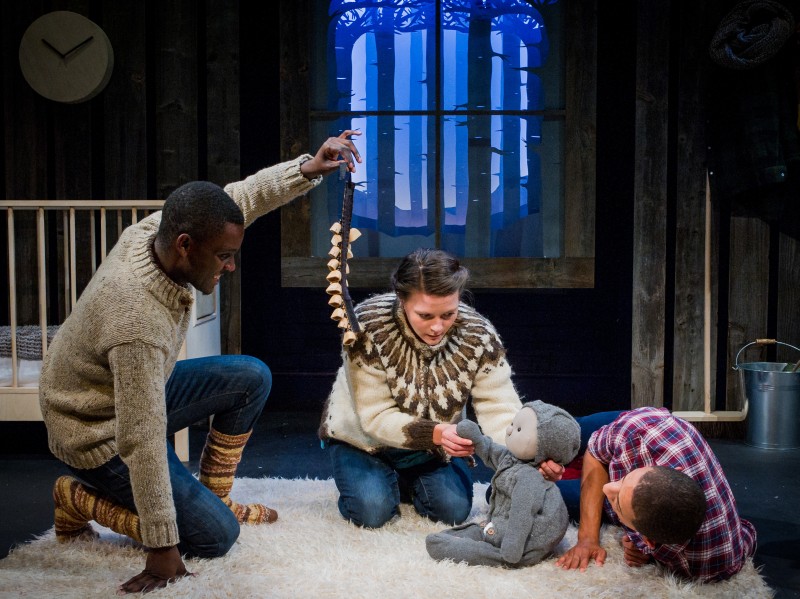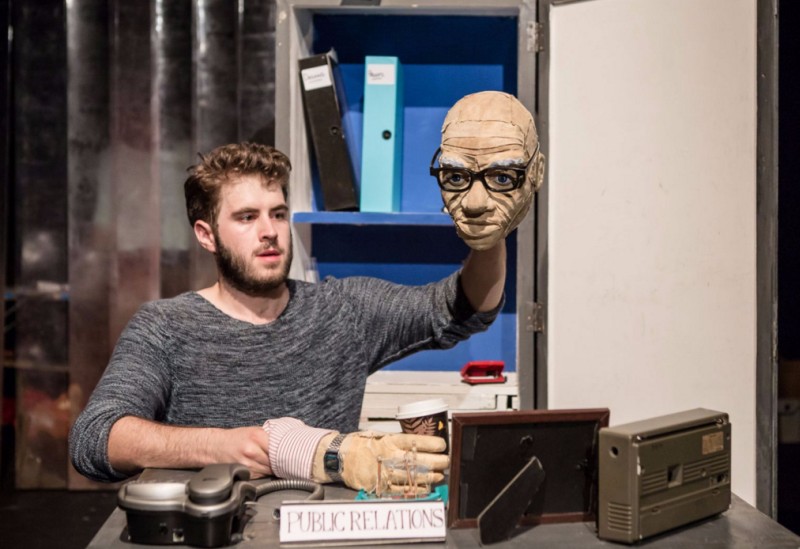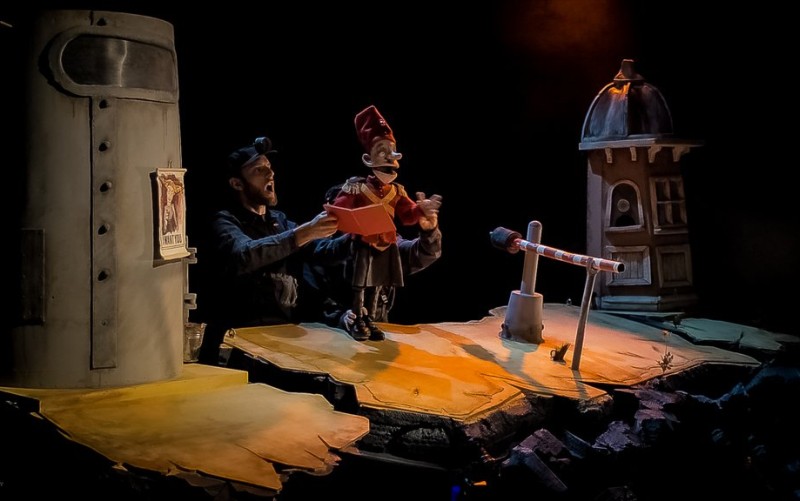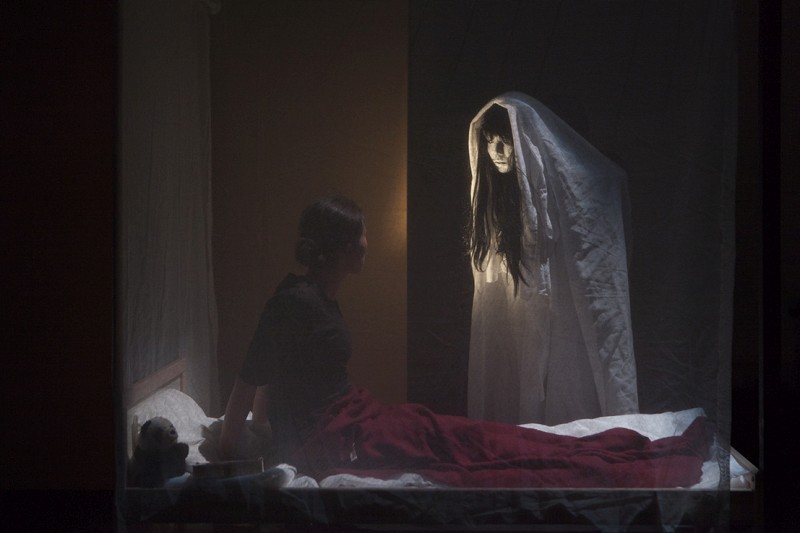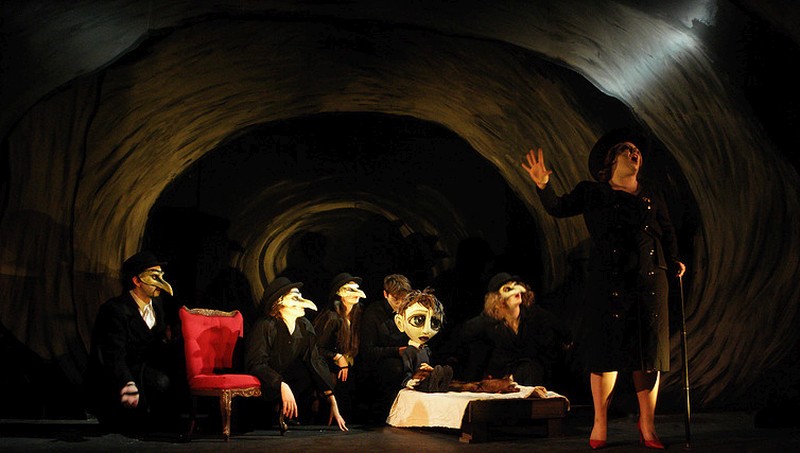 This performance incorporates theatre, musical theatre and visual theatre in a variety of styles to tell several stories, the main one being a young boy’s challenging coming of age to be a teenager. While his parents are going through an acrimonious split, he finds comfort in the fantasy worlds created by his grandmother, until, that is, she passes away. His mother, now struggling to raise the boy by herself, is concerned about his behaviour and books him to see a mental health professional who seems to delight in prescribing anti-psychotic medication and finally sectioning him.
This performance incorporates theatre, musical theatre and visual theatre in a variety of styles to tell several stories, the main one being a young boy’s challenging coming of age to be a teenager. While his parents are going through an acrimonious split, he finds comfort in the fantasy worlds created by his grandmother, until, that is, she passes away. His mother, now struggling to raise the boy by herself, is concerned about his behaviour and books him to see a mental health professional who seems to delight in prescribing anti-psychotic medication and finally sectioning him.
A darkly gothic style in many ways, the set, costumes, props and puppets are all quite sinister. The set is a cave and a series of concentric rings of cave mouth establish a claustrophobic atmosphere, and even before the set is revealed we have an opening monologue from a man who appears to be on the edge of a precipice. The curtains part to reveal the past where the Boy (who seems to have no other name), as a puppet, is desperately running, operated bunraku-style by three people.
The puppet is about two-thirds life size with a very large head in proportion to the body and even larger eyes in proportion to the other features of the face. Raven Kaliana’s design is very appropriate, as the boy is portrayed as a highly sensitive soul who speaks very strangely and doesn’t appear to connect to this world very well, presaging his descent into ‘madness’ that is central to the show. The puppet is operated and voiced by Zac Hamilton who does his best to hide behind it, particularly his face. This is a shame as it makes his voice a little too muffled and degrades his ability to have a precise eye-line with the puppet.
The scenes are presented in a large variety of styles; musical theatre, physical theatre (with masked chorus), straight drama, visual theatre. This creates a sense of never quite knowing what world we’re in and may reflect the Boy’s own uncertainties about fantasy from reality. The presentations of the Grandmother’s stories, in which the Boy takes refuge, use a variety of puppetry techniques. Shadow sequences are particularly effective, some live and some projected from pre-recorded film. Some glove puppets, direct manipulation figures, and a string puppet are also used during the show but to far less effect, due to the open staging.
It is not easy to connect the elements of this performance together. The music and the songs are well arranged and delivered by the talented cast, but this isn’t a musical in which the plot is driven by the songs. Instead they provide a commentary on the events or present a sideline story. The fantastical stories use archetypes from fairytale and folklore that seem to refer to mother/son relations. The scenes between the boy and his teachers, his parents, and the doctor who medicates him are often quite naturalistic. There is no humour or lightness in any of the scenes which make the characters ultimately feel distant and hard to relate to and this is compounded by the lack of insight offered as to what drives them, so it is difficult to care sufficiently about their suffering.
The cast are all talented singers and performers, well trained and able. Anya Hamilton (as the Mother) in particular shows a level of detail and strength in both acting and singing. This production is written, produced and lit by Adrian Sandvaer who despite crediting two co-writers (Ragnhild Kristoffersen and Gabriel Owen) hasn’t quite managed to create a satisfying narrative. The narration describes the show’s tale as ‘A story so sad and so wrong that it breaks your heart to hear it’, a description which for me sitting in the audience rang out loud and clear.

